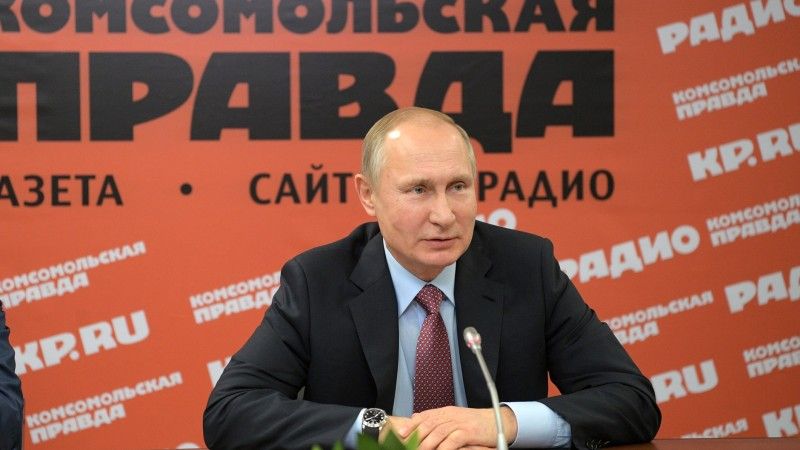Manipulation and propaganda. How Kremlin attacks gas supply diversification

Gasport in Krk, Croatia, is going to be the key element of gas supply diversification in Central Europe and Balkans, along with LNG terminal in Świnoujscie and the Baltic Pipe. Russian propaganda has recently become more active, attacking the pipeline and LNG supply. Now the time has also come for Krk.
For several years the U.S. has been conducting an active media campaign against Russian gas pipelines. Washington blames Russia for using gas as an instrument of political pressure and proposes LNG to its allies as a favourable alternative for their energy security. Yet, are Americans sincere in their concern about the Europeans, and what lies behind their strategy? Let’s look at the facts’ – with these
The diplomat lists a number of arguments in favour of Russian resources without any hesitation to bend the reality. Let’s examine them.
We read that ‘critics of Russia are not able to quote
We
The issue became problematic for Kremlin only when pro-Western parties took power in Kiev as a result of the Orange Revolution. That is when Russia started to sabotage any forms of agreements, leading to a cut off the gas supply for Ukraine during the winter heating period.
In this way, Kremlin forced Kiev to accept increases in gas prices and, above all, to agree on setting up RosUkrEnergo, an intermediate company between Gazprom and Naftohaz. The main aim of RosUkrEnergo was to lobby for Russia’s interests in Ukraine. It is enough to mention that Gazprom holds 50% of shares, and 90% of the second half is possessed by pro-Russian oligarch Dmytro Firtash, currently under house arrest in Austria. Besides, one of the executive directors of RUE was … a college of Dmitry Medvedev from KGB Academy.
Another gas crisis in 2009 was non-political, too, as suggested by the ambassador. Yet, this time he misses the truth even more. The crisis created by Russia was used to force Ukraine to sign an unfavourable agreement on gas transit and supply (what was then confirmed by Stockholm arbitration court) and to conclude a contract with lower gas prices – however in exchange Ukraine agreed to extend the term of Russian Black Sea Fleet presence in Crimea for 25 more years.
A few years later Russian forces proved to be ‘little green men’ who annexed Crimea in 2014.
But
Gazprom also makes use of more subtle methods, for
In his
Another interesting issue is Asimov’s interpretation of motives behind
Let’s look at the facts once again. The decision on cutting off gas supply through Ukraine was taken by Russia only. At the time Kiev was trying to maintain pressure in the points of gas input on the EU territory, making use of the biggest European gas tanks of
The purpose of mentioned pipelines is to omit Ukraine in gas transmission. Yet, the good of Europe is not the motive. From 2015 Ukraine has not imported gas from Russia. However, it has been delivered to Ukrainian customers through
At the same time, Ukraine needs gas transit through its territory to maintain distribution system. Shortly, its pipeline system is constructed in a specific way – when gas transit is stopped, some of the pipelines will have to be closed and a part of the population will lose access to
In this context omitting Ukraine seems to be the best (though very expensive for Russia) method to destabilise the country, already weakened by the war. It is no coincidence that pro-Russian rival of Petro Poroshenko backs reversion of gas reforms implemented by the current government. Her electoral victory would mean maintenance of gas supply in exchange for submissiveness to Russia and suspension of pro-western trends in Ukraine. Gas is one more time a political tool.
It is not surprising that recently we have observed Russian media attack on projects aimed at gas supply diversification in Eastern-Central Europe and Balkans, with Poland and Croatia as the leading countries. Let us remind that there are already existing gas port in Świnoujście, planned Baltic Pipe connecting Norwegian deposits with Poland as well as
With the expansion of interconnectors between Baltic and Adriatic/Black Sea pipeline systems,
The ambassador Asimov is right to assert that the U.S. wants to push Russia out from the regional market. More precisely, Washington wishes to find new customers for its gas and make NATO members less dependent on Russian supply of strategic resources. It is not a healthy state of affairs when countries like Slovakia purchase 100% of gas from Russia and are forced to declare a state of emergency in case of interruption of the gas supply, as it was in 2009.
The fact Poland is half dependent on Russian gas but pays for it more than Germany (for which gas is transited through Poland) is also ridiculous. The difference between the two countries is that Warsaw is less keen to make any concessions to Kremlin than Berlin. This is the essence of political use of gas.
That is why construction of the gas terminal in Krk is as important as